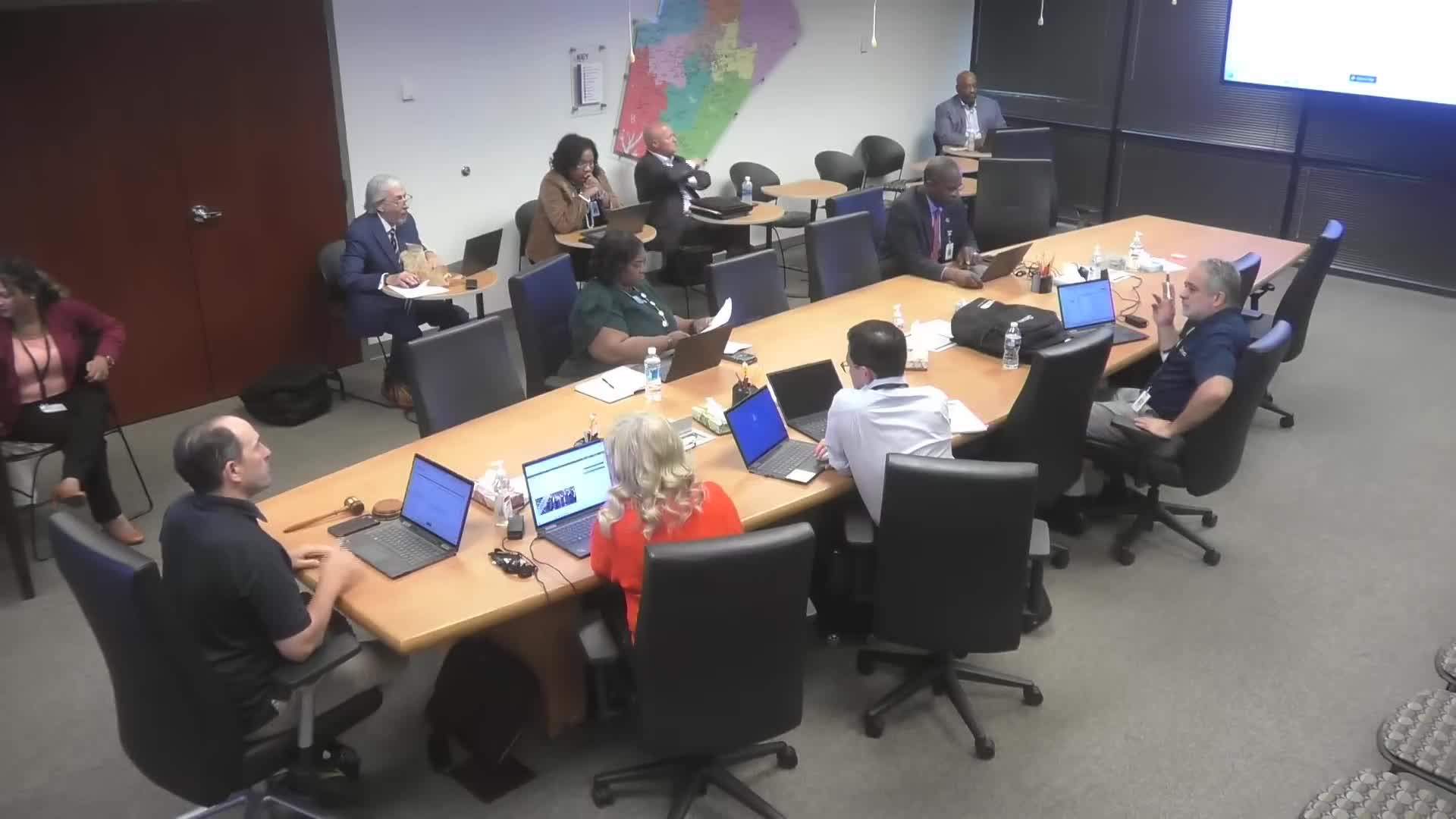Committee asks staff for comparative cost models and a capacity audit amid growth and trailer use discussions
October 14, 2025 | Wake County Schools, School Districts, North Carolina
This article was created by AI summarizing key points discussed. AI makes mistakes, so for full details and context, please refer to the video of the full meeting. Please report any errors so we can fix them. Report an error »

Committee members asked Facilities staff to provide comparative cost‑model assumptions (per‑square‑foot and program‑space guidance) to aid oversight of the district’s design and budgeting practices.
Request for comparative models: Board members asked to see the assumptions and unit costs that staff use to establish project budgets and to compare Wake County’s model against other large North Carolina districts (Mecklenburg, Union, Johnston, Cumberland, Durham were mentioned as examples). A board member suggested that either staff provide the full comprehensive book of model assumptions or provide comparative documents from similar districts to help the committee evaluate whether Wake’s assumptions are in line with peers.
Capacity, flexibility and modular units: staff described ongoing work to create more flexible instructional space inside the brick‑and‑mortar footprint, explained that the design process includes a post‑occupancy review a year after a new school opens, and said the district is preparing a capacity audit of older schools. Staff and board members discussed the district’s long history of using mobile units (trailers) as temporary capacity; several members noted that trailers, initially intended as temporary solutions, have in some cases become long‑term fixtures, and staff said they are actively identifying surplus modular units that could be moved to higher‑growth areas in the eastern part of the county.
Why it matters: committees and board members said better comparative data and transparency about cost modeling would help them be effective fiduciaries for CIP dollars, understand tradeoffs (for example, more permanent additions versus temporary trailers), and assess whether current programmatic space assumptions remain appropriate given changing instructional models.
Speakers named or quoted: Dr. Inge (board member), Chair Haggerty (briefly referenced), staff from facilities/FD&C and student assignment (Glenn referenced), multiple board members who asked for comparative information and audit results.
Next steps: staff agreed to gather comparative cost‑model information from larger districts and bring cost model information to the committee. Staff also said the district will begin a capacity audit of older schools to identify internal flexible spaces and opportunities to add capacity without relying solely on mobile units.
Request for comparative models: Board members asked to see the assumptions and unit costs that staff use to establish project budgets and to compare Wake County’s model against other large North Carolina districts (Mecklenburg, Union, Johnston, Cumberland, Durham were mentioned as examples). A board member suggested that either staff provide the full comprehensive book of model assumptions or provide comparative documents from similar districts to help the committee evaluate whether Wake’s assumptions are in line with peers.
Capacity, flexibility and modular units: staff described ongoing work to create more flexible instructional space inside the brick‑and‑mortar footprint, explained that the design process includes a post‑occupancy review a year after a new school opens, and said the district is preparing a capacity audit of older schools. Staff and board members discussed the district’s long history of using mobile units (trailers) as temporary capacity; several members noted that trailers, initially intended as temporary solutions, have in some cases become long‑term fixtures, and staff said they are actively identifying surplus modular units that could be moved to higher‑growth areas in the eastern part of the county.
Why it matters: committees and board members said better comparative data and transparency about cost modeling would help them be effective fiduciaries for CIP dollars, understand tradeoffs (for example, more permanent additions versus temporary trailers), and assess whether current programmatic space assumptions remain appropriate given changing instructional models.
Speakers named or quoted: Dr. Inge (board member), Chair Haggerty (briefly referenced), staff from facilities/FD&C and student assignment (Glenn referenced), multiple board members who asked for comparative information and audit results.
Next steps: staff agreed to gather comparative cost‑model information from larger districts and bring cost model information to the committee. Staff also said the district will begin a capacity audit of older schools to identify internal flexible spaces and opportunities to add capacity without relying solely on mobile units.
View full meeting
This article is based on a recent meeting—watch the full video and explore the complete transcript for deeper insights into the discussion.
View full meeting
